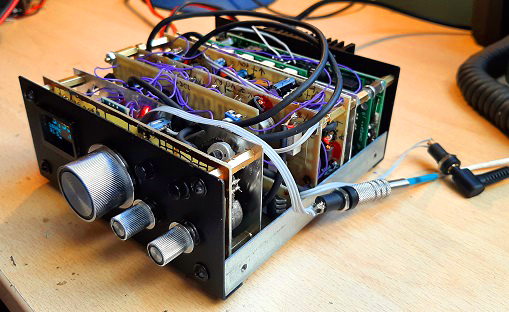dr pepper
Advanced Member level 1
I'm throwing together a simple receiver using largely a Ne602 and a Ta7642 for am/cw demod and agc.
Between the '602 and the '7642 I'm using a single 3.579Mc colourburst crystal as the IF filter.
Ladder filters seem to use a cap between the first xtal, and the last xtal to the amp stage, with the caps to ground inbetween, to load the xtals.
Fiddling around I found that one 33pf from the o/p side of the xtal to ground works the best, a 15pf in series with the i/p and o/p seems to raise the stopbands to the point where they are clearly audible.
Whats the difference inbetween having a cap on the i/p and o/p, and just one at the o/p.
Between the '602 and the '7642 I'm using a single 3.579Mc colourburst crystal as the IF filter.
Ladder filters seem to use a cap between the first xtal, and the last xtal to the amp stage, with the caps to ground inbetween, to load the xtals.
Fiddling around I found that one 33pf from the o/p side of the xtal to ground works the best, a 15pf in series with the i/p and o/p seems to raise the stopbands to the point where they are clearly audible.
Whats the difference inbetween having a cap on the i/p and o/p, and just one at the o/p.




